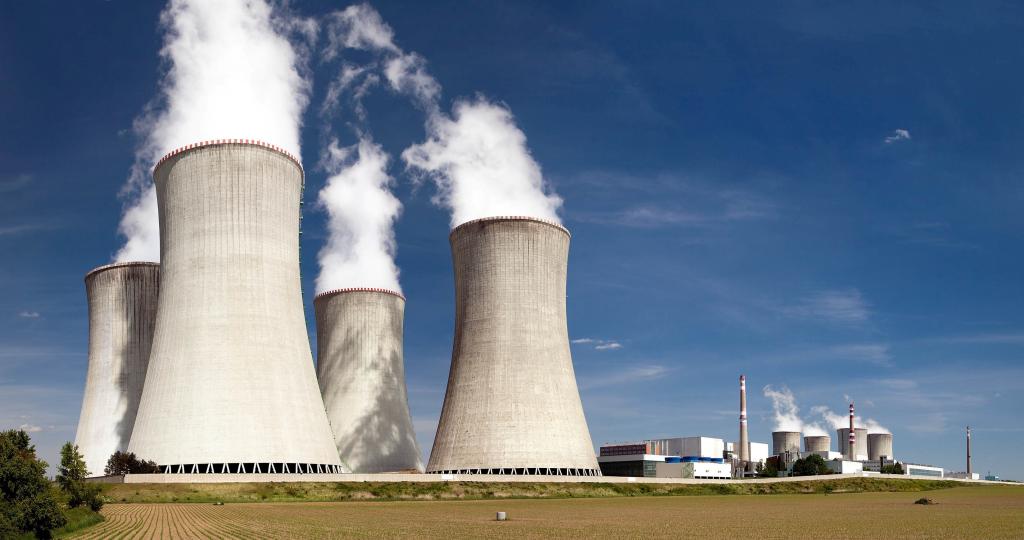
Nuclear Reactors, Materials, and Waste Sector
From the power reactors that provide electricity to millions of Americans, to the medical isotopes used to treat cancer patients, the Nuclear Reactors, Materials, and Waste Sector covers most aspects of America’s civilian nuclear infrastructure. The Nuclear Sector Risk Management Agency within the Department of Homeland Security is responsible for coordinating the security and resilience of the Nuclear Sector.

Sector Overview
The Nuclear Reactors, Materials, and Waste Sector includes:
- 92 Active Power Reactors in 30 states that generate nearly 20 percent of the nation’s electricity. In the United States, there have been no civilian deaths associated with the operation of a nuclear power plant since the technology’s introduction over 60 years ago, making nuclear power one of the safest forms of energy in the country.
- 31 Research and Test Reactors located at universities and national labs. These reactors produce medical and industrial isotopes used to treat cancer and perform radiographic services, as well as to conduct academic research across multiple fields, including chemistry, physics, and material science.
- 8 Active Nuclear Fuel Cycle Facilities that are responsible for the production and reprocessing of nuclear reactor fuel. These facilities take natural uranium from the ground and enrich it to approximately 5 percent Uranium-235. This enriched uranium is turned into solid Uranium Dioxide fuel pellets for use in nuclear reactors.
- More than 20,000 licensed users of radioactive sources. These radioactive sources are used for medical diagnostics and treatment in hospitals, depth measurements at oil and gas drilling sites, sterilization at food production facilities, research in academic institutions, and examining packages and cargo at security checkpoints.
Over 3 million yearly shipments of radioactive materials. Special security measures are taken when radioactive materials are shipped to ensure the safety of the transportation workers, and to prevent theft or sabotage of the radioactive material itself.
The sector is interdependent with other critical infrastructure sectors:
- Chemical Sector – Chemicals are used daily in the production of electricity.
- Emergency Services Sector – The Nuclear Sector’s uniquely hazardous characteristics require trained emergency responders during any incident.
- Energy Sector – Nuclear facilities both supply electricity and depend heavily on uninterrupted power for continuous safe operation.
- Healthcare and Public Health Sector – North America performs about 20 million medical procedures each year using radioactive materials.
- Transportation Systems Sector – Nuclear and radioactive materials are shipped worldwide via air, rail, highway, and water.
- Water and Wastewater Systems Sector – Nuclear power plants use large quantities of water for cooling. Interrupted water supply may require shut down.
Sector-Specific Plan
The Nuclear Reactors, Materials, and Waste Sector-Specific Plan details how the National Infrastructure Protection Plan's risk management framework is implemented within the context of the unique characteristics and risk landscape of the sector. Each Sector Risk Management Agency (SRMA) develops a sector-specific plan through a coordinated effort involving its public and private sector partners. The Department of Homeland Security is designated as the SRMA for the Nuclear Reactors, Materials, and Waste Sector.
Nuclear Sector Cybersecurity Framework Implementation Guidance
The National Institute of Standards and Technology (NIST) released the voluntary Framework for Improving Critical Infrastructure Cybersecurity (Framework) in February 2014 to provide a common language that critical infrastructure organizations can use to assess and manage their cybersecurity risk. The Framework enables an organization—regardless of its sector, size, degree of risk, or cybersecurity sophistication—to apply the principles and effective practices of cyber risk management to improve the security and resilience of its critical infrastructure.
The U.S. Department of Homeland Security (DHS), as the Sector Risk Management Agency (SRMA), worked with the Nuclear Reactors, Materials, and Waste Resources Sector Coordinating Council (SCC) and Government Coordinating Council (GCC) to develop the Nuclear Sector Cybersecurity Framework Implementation Guidance specifically for Nuclear Sector owners and operators. This Implementation Guidance provides Nuclear Sector organizations with:
- Background on the Framework terminology, concepts, and benefits of its use.
- A mapping of existing cybersecurity tools and resources used in the Nuclear Sector that can support Framework implementation.
- Detailed Framework implementation steps tailored for Nuclear Sector owners and operators.
Framework for Improving Critical Infrastructure Cybersecurity
Featured Resources
Non-Radioisotopic Alternative Technologies White Paper
Sector Training
Global Threat Reduction Initiative Alarm Response Training
Voluntary training for radiological events for the security forces, health and safety personnel, and supporting local law enforcement to develop, discuss, and exercise their own tactics, techniques, procedures, and protocols when responding to a theft and/or sabotage event involving radioactive materials of significance. Download the program factsheet below.
Sector Resources
U.S. Nuclear Regulatory Commission (NRC)
- U.S. Nuclear Regulatory Commission (NRC)
- How We Regulate: An overview of the Nuclear Regulatory Commission's (NRC) regulatory process.
- NRC Reading Room: A library of documents and records released by the NRC to the public covering NRC's regulatory activities.
- NRC’s High-Value Datasets: Covers key data and information disseminated by the NRC.
U.S. Department of Energy (DOE)
- U.S. Department of Energy (DOE)
- Office of Nuclear Energy (NE): Information on how DOE/NE advances nuclear power as a resource to meet National energy, environmental, and national security needs.
- Office of Environmental Management (EM): Information on how DOE/EM completes cleanup activities from nuclear weapons development and government-sponsored nuclear energy research.
U.S. Environmental Protection Agency (EPA)
- U.S. Environmental Protection Agency (EPA)
- EPA Radiation Protection Programs: Links to information on EPA’s radiation protection programs for numerous audiences, including the general public, teachers/students, librarians, reporters, and technical users.
- EPA Protective Action Guides (PAGs): PAGs provide radiation-protection precautions that state and local authorities can take in the event of a radiological emergency.
- RadTown USA: A “virtual community” with information on radiation sources and uses encountered in everyday life.
U.S. Department of State
International Atomic Energy Agency (IAEA)
Established as the world's center for cooperation in the nuclear field and works with its member states and multiple partners worldwide to promote safe, secure, and peaceful nuclear technologies.
Nuclear Energy Agency (NEA)
NEA’s mission is to assist member countries in maintaining and further developing their industry through international cooperation under scientific, technological, and legal bases that support the safe, environmentally-friendly, and economical use of nuclear energy for peaceful purposes.
Nuclear Energy Institute (NEI)
- Nuclear “Knowledge Central" at the Nuclear Energy Institute: A source for statistics, FAQs, maps, and other information on nuclear energy.
- Nuclear Energy Institute (NEI)
World Institute of Nuclear Security (WINS)
WINS's mission is to provide an international forum for those accountable for nuclear security to share and promote the implementation of best security practices.
Nuclear Facilities
NRC: Nuclear Reactors
An overview of NRC’s regulation of U.S. commercial nuclear plants.
U.S. Energy Information Administration (EIA)
A source for data, statistics, and analysis on nuclear power.
Ready.Gov: Nuclear Power Plant Emergency
Information developed by FEMA to be considered in the event of a nuclear power plant emergency.
Federal Emergency Management Agency's (FEMA) Radiological Emergency Preparedness Program
FEMA's Radiological Emergency Preparedness Program ensures that the health and safety of citizens living around commercial nuclear power plants is adequately protected in the event of a nuclear power plant accident and informs and educates the public about radiological emergency preparedness.
Nuclear Materials
NRC: Nuclear Materials
An overview of NRC’s regulation of nuclear materials.
Department of Energy (DOE) National Nuclear Security Administration (NNSA) Global Threat Reduction Initiative (GTRI)
GTRI coordinates with U.S. partners, such as hospitals, universities, and industry, to provide voluntary security enhancements to prevent terrorists from acquiring radiological materials.
Department of Transportation (DOT) Pipeline and Hazardous Materials Safety Administration (PHMSA)
Information on PHMSA outreach, training, seminars, and workshops.
Conference of Radiation Control Program Directors (CRCPD)
CRCPD's mission is to promote consistency in addressing and resolving radiation protection issues, to encourage high standards of quality in radiation protection programs, and to provide leadership in radiation safety and education initiatives.
Organization of Agreement States (OAS)
The OAS provides a mechanism for the “Agreement States” to work with each other and with NRC on regulatory issues associated with their respective agreements.
Health Physics Society (HPS)
Provides information and answers to questions about radiation, radiation safety, and protection.
Nuclear Waste
NRC: Radioactive Waste
An overview of NRC’s regulation of nuclear waste.
U.S. Nuclear Waste Technical Review Board (NWTRB)
The NWTRB is an independent agency whose sole purpose is to provide independent scientific and technical oversight of the Department of Energy's program for managing and disposing of high-level radioactive waste and spent nuclear fuel.
DOE/NNSA/GTRI's Offsite Source Recovery Project
The program's mission is to remove excess, unwanted, abandoned, or orphan radioactive sealed sources that pose a potential risk to health, safety, and national security.
- DOE/NNSA/GTRI's Offsite Source Recovery Project
Final Report of the Blue Ribbon Commission on America's Nuclear Future
The Commission’s January 2012 report to the Secretary of Energy outlines their findings, conclusions, and recommendations covering “the back end of the nuclear fuel cycle.”
Contact Us
For additional information, please contact the Nuclear Sector Risk Management Agency at NuclearSector@cisa.dhs.gov




